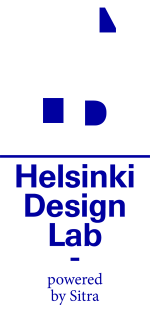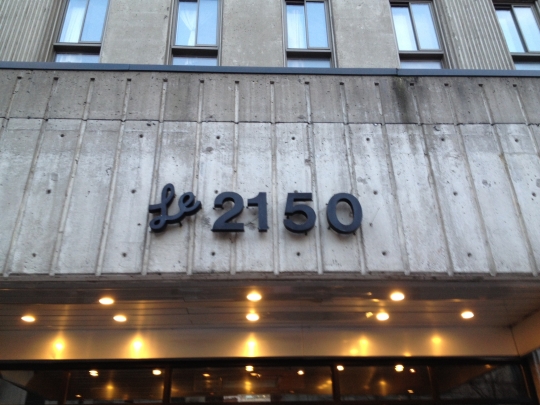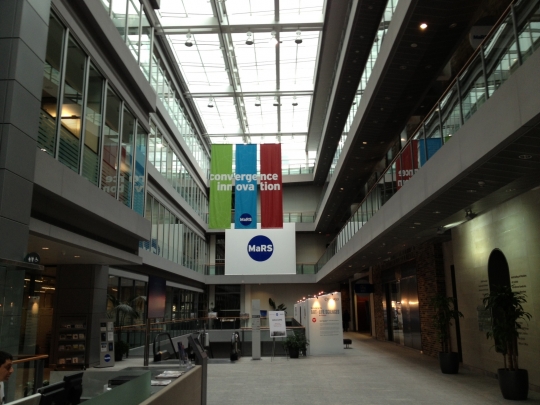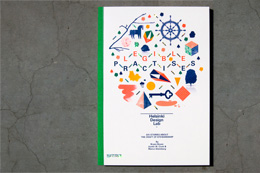First, some big news. We're sad (but proud and also happy!) to announce that Dan has moved on from Sitra and has taken up a new post as CEO of Fabrica, the communications research center of the Benetton company. He will be back to make a final post on this blog in the nearish future, but currently he's a bit pre-occupied with his new work in Italy. As you might expect!
Second, some less big news. We published four booklets recently. Read more about them here and here.

Publication dummies all lined up
It's only Wednesday so this weeknote is coming early. I'm in the air somewhere halfway across Canada. Actually, just south of a town called Outlook, which is an ironic thing to spot when glancing up from my inbox to scan the inflight map.
Tim Dramin and his excellent team at Social Innovation Generation (SIG) have been hosting me for visit to Toronto these past two days. MaRS has been by nexus during these days and it's a bit like hanging around an alternate reality version of Sitra. We're different in important ways (they incubate and we don't, for instance) but there's a familiar buzz in the air. Before that I was in Montreal with the McConnell Family foundation, and currently I'm on my way to Vancouver where I'll be hosted by Al Etmanski of SIG West.
These days have been (and will continue to be) packed. Canada seems to be mobilizing quite an effort around labs of various sorts: design labs, change labs, social innovation labs. There's an investment in codifying the various types and I'm curious to see how this evolves. Lisa Torjman's paper from earlier this year, entitled Labs: Designing The Future, is a good starting point, as is the Policy Horizons Canada document which was recently published. HDL's appearance in both have provided useful opportunities for us to see ourselves anew through someone else's analysis.
We got roped into the lab discussion in Canada and have since been enjoying an ongoing dialogue about what a lab is and what it does well. But here's a secret: we didn't choose the name "lab," we inherited it.
To be honest, all of us here on the HDL team have felt a bit uncomfortable with the term since we started ramping things up in 2009. Our initial skepticism came from a sinking feeling that "lab" was a bit of a trendy term. On the other hand, there was already momentum behind the name, and something of a legacy. So, as hard as we tried to make up a better name, we weren't able to. We accepted it for what it was and is: just a name. Plus, it performs well as a search term, which is not to be underestimated.
If I remember correctly, the top alternative was Strategic Design Lab. The reason we nixed that option is because it's too generic. It's harder to search for. It gives you nothing to grab onto. Our work, even when we have a global perspective, is rooted in Helsinki. It's an ongoing discussion and an evolving practice that draws from the legacy of Sitra and that of design in Finland and the broader Nordic region.
And almost by accident—or was it subconsciously?—we've arrived at a place where many of our projects are situated within the city. Today more than when we began things, our work is starting to look like Helsinki Design Lab. Speculating on and prototyping future Helsinkis. That's a topic for another day.
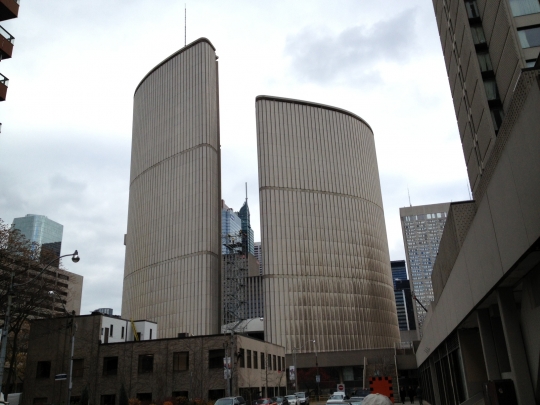
Toronto City hall designed by Finnish architect Viljo Revell
Still, "lab" has been the active word in my trip to Canada and I've been reflecting on how we define ourselves as a lab. If we're to own the fullness of the name Helsinki Design Lab, what does that mean? What is a lab? What is our lab? The notes I wrote on my way to Canada earlier this week:
Lab: platform for coherence and continuity
Lab: conducts experiments to generate evidence that guide further experiments
Lab: should have a portfolio of activity (not just one thing)
Lab: not a process but a practice
Lab: a place (but nothing fancy)
Lab: a core team
Lab: has a set of (consistent) tools
Lab: hosts an evolving conversation
The strength of our lab resides in the fact that we're able to work in an agile or nimble manner. Continuity on a basic level (funding, infrastructure, team, tools) enables us to pursue an evolving portfolio of projects using whatever combination of processes and tools are most appropriate for the specific projects at hand, in the specific moment.
This agnosticism towards tools and processes enables us to be flexible and opportunistic when we need to be—or put another way, when being flexible is the cheaper, faster, or easier pathway to our desired impacts. When we need to pivot, we can pivot. But pivoting is not easy, so the continuity of our shared practice is important. We've literally had to practice this work together to become adept at it. It's a new approach to producing social change, so I think it would be silly to assume that we could get that right without practicing in quite a literal way. One can only read so much music theory before sitting down at the keyboard, as it were.
In practical terms this means that we maintain a basic ability to reallocate our staffing, our budgeting, and our approach to a problem when necessary. This is not easy, but it's critically important. By definition, when doing something truly innovative it's not possible to predict all aspects of the work in advance. With the hindsight of 100 years from now, the belief that such planning and prediction is cheap enough to bake into everything we do will seem like a glitch. Measurement and feedback loops, yes, but we will have to find a way to integrate some degree of fuzziness.
Factories stamp out the same ole widgets, but labs are about developing an understanding for how to do new things. They are places where we expect to see configurations of equipment half deconstructed and reassembled into motley but functional piles. It's not just our desks which are messy at HDL/Sitra Strategic Design Unit, our work is also messy and unpredictable at times. It speeds up and slows down; it goes over budget and sometimes comes in under budget; but every now and then we hit upon something truly effective and that helps us learn about the world.
For a lab, and especially a lab situated within an organization like Sitra that has a financial acumen, the portfolio is the most natural scale of evaluation. Is the sum total of everything the lab is involved in net positive? It's easier for our colleagues in the endowment capital group to check their mixed portfolio of different asset classes and get a sense of whether the numbers are up or down—regardless of asset class, they're all reporting in euros. For our work we're sometimes struggling to make sense of numbers, intuition, and narratives. These make difficult bedfellows as metrics to assess a single portfolio, but it's something that we've developed a skill at through a four year conversation within the team. Good. The next question is how to codify that so that the next group can figure out how to do it in half the time. Eventually we'll all get there.
That's the thing, isn't it? We have 150 years of practice (or more) in predicting and working with financial indicators. It may be extremely important to develop ways to do the same with social indicators, but that doesn't mean we should expect that it will happen faster. We can and should desire that we, as a society, skill up in this area much more rapidly than we did with financial capital, but the likelihood is that we will be struggling with these questions for decades to come.
So I return to the lab as a platform of continuity that hosts an ongoing and evolving discussion around a limited set of issues. One that nurtures knowledge and produces evidence. One that serves the outside world and itself benefits by having feedback loops that enhance the next efforts. The goal of our science labs is not just to produce breakthroughs in their own particular corner of study, but also to become better at science itself.
The practice we're nurturing is strategic design. We're developing a way of designing tangible projects that help us identify and act on systemic change opportunities. We're developing ways to use projects to help us see and then change our cultures of decision-making. We're developing projects that have incremental tangible outcomes so that if they become compromised, canceled, or failed before reaching their final goals that we will still be left with some form of net positive results.
Tomorrow comes to us courtesy of the relentless incrementalism of today, and sometimes (but rarely) we find a beautiful shortcut. If there's one thing a lab does, it's to deliberately search for these shortcuts and then run through them as fast as it can.
